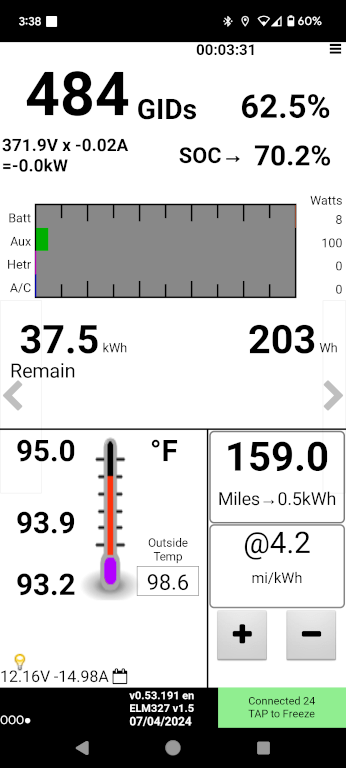knightmb
Well-known member
To start with, I've known about this "cooling" technique for nearly a decade now. Basically, when "heating" issues first came up with doing multiple QC on the Leaf, the battery temperature always had some "urban legend ways" to cool it down. For the longest time, I've read about the dumping of ice into the central disconnect cavity and while it seemed silly, some people said it worked, others said it was dumb because of the size of the battery and the thermal mass, etc. I have never seen anyone actually try an experiment with measurements to see if it actually does anything.
Well, with the Holiday and some free time, I got another question from a friend asking if the "dump ice on it" they were reading about from some old FB post years ago actually did anything. I told them the battery was so big, it would take a lot of ice to begin with and even then I wasn't sure if it would even make a dent in the battery temperature if it was really hot outside, like anything above +90 F (32.2 C) for example. Today I decided to actually put that to the test and see if it made any measurable difference.
I came into this experiment expecting to fail in a spectacular way. I didn't even think it would move the temperature in the conditions I was testing in because it was so hot outside but it seems there is something to this.
I didn't even think it would move the temperature in the conditions I was testing in because it was so hot outside but it seems there is something to this.
To start, my test Leaf was my 2020 SL Plus. It has the 62 kWh battery pack, so it has the largest thermal mass of any Leaf. Another bonus, it was blazing hot outside and the battery had the entire day to sync up with the air temperature. It was +96 F (35.5 C) outside when I started my experiment and climbing!
I start by opening up the rear, center floor console to access the battery safety disconnect area.
I know this area basically is in line with the top air flow channels, so any water in the area should drain out fairly quick. So I cover the switch with a small zip lock bag to keep out any water and proceed to pour some small amounts of tap water around to make sure the channels are cleared out. This way, any ice melt will drain out properly. The last thing I want to do is form of pool of water that leaks into that disconnect plug.

Next, with the bag still covering the disconnect plug, I fill the entire area up with ice that measures around 0 F (-17.7 C).

As the ice begins to melt, my Leaf appears to leaking everywhere underneath as expected.

Finally, when I quit taking measurements, still had this much ice left before I dried out everything and bolted the covers back on. I just left the rest of the ice in there, it will melt away anyway.

Well, with the Holiday and some free time, I got another question from a friend asking if the "dump ice on it" they were reading about from some old FB post years ago actually did anything. I told them the battery was so big, it would take a lot of ice to begin with and even then I wasn't sure if it would even make a dent in the battery temperature if it was really hot outside, like anything above +90 F (32.2 C) for example. Today I decided to actually put that to the test and see if it made any measurable difference.
I came into this experiment expecting to fail in a spectacular way.
To start, my test Leaf was my 2020 SL Plus. It has the 62 kWh battery pack, so it has the largest thermal mass of any Leaf. Another bonus, it was blazing hot outside and the battery had the entire day to sync up with the air temperature. It was +96 F (35.5 C) outside when I started my experiment and climbing!
I start by opening up the rear, center floor console to access the battery safety disconnect area.
I know this area basically is in line with the top air flow channels, so any water in the area should drain out fairly quick. So I cover the switch with a small zip lock bag to keep out any water and proceed to pour some small amounts of tap water around to make sure the channels are cleared out. This way, any ice melt will drain out properly. The last thing I want to do is form of pool of water that leaks into that disconnect plug.

Next, with the bag still covering the disconnect plug, I fill the entire area up with ice that measures around 0 F (-17.7 C).

As the ice begins to melt, my Leaf appears to leaking everywhere underneath as expected.

Finally, when I quit taking measurements, still had this much ice left before I dried out everything and bolted the covers back on. I just left the rest of the ice in there, it will melt away anyway.

Last edited:












